
Piercing the veil
A new exhibition at Buxton Contemporary finds a rich complexity in the shadowy terrain between life and death.

Allery Sandy, Marni, 2021, acrylic on canvas, 1160 x 1790mm. Image courtesy of Allery Sandy (Yinjaa-Barni Art).
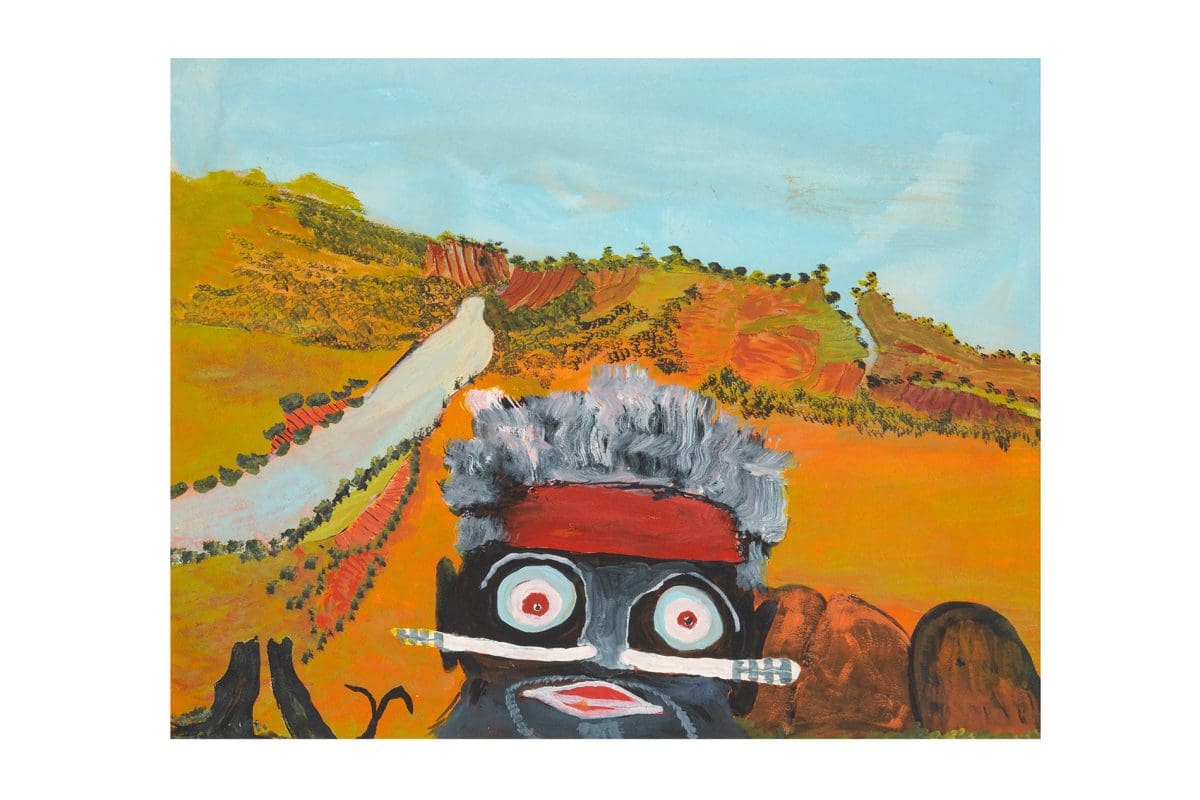
Illyampi Victor Burton, Untitled (Mamu), 2020. Acrylic on watercolour paper, 560 x 710mm. Image courtesy of Illyampi Victor Burton (Spinifex Hill Studio).

Martumili Artists, Kintyre, 2020 – 2021, acrylic on canvas, 5000 x 3000mm. Image courtesy of Martumili Artists.
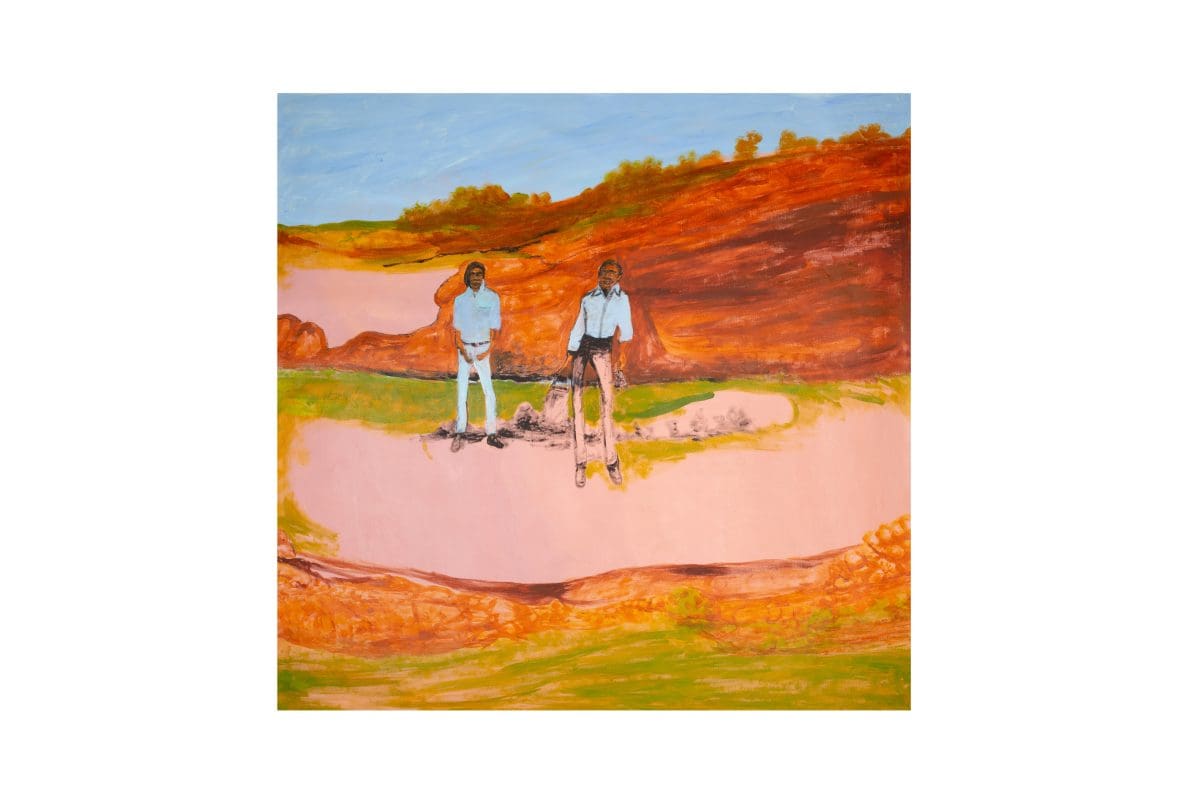
Nyaparu (William) Gardiner (dec.), Cattlemen in the Pilbara, 2018. Acrylic on canvas, 1520 x 1520mm. Image courtesy of Nyaparu (William) Gardiner (dec.) (Spinifex Hill Studio).
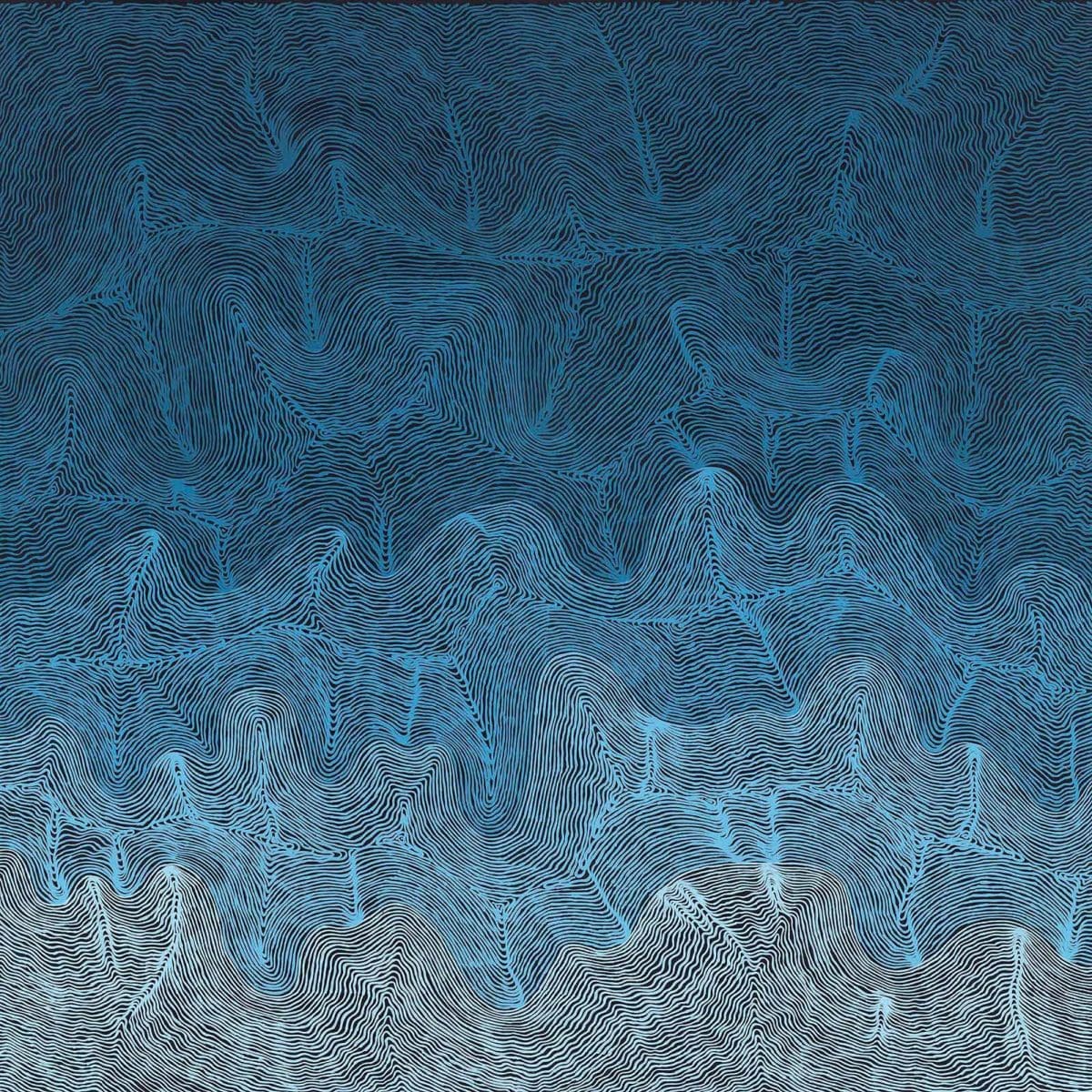
Wendy Warrie, Hightide, 2021, acrylic on linen, 2000 x 2000mm. Image courtesy of Wendy Warrie (Cheeditha Art Group).
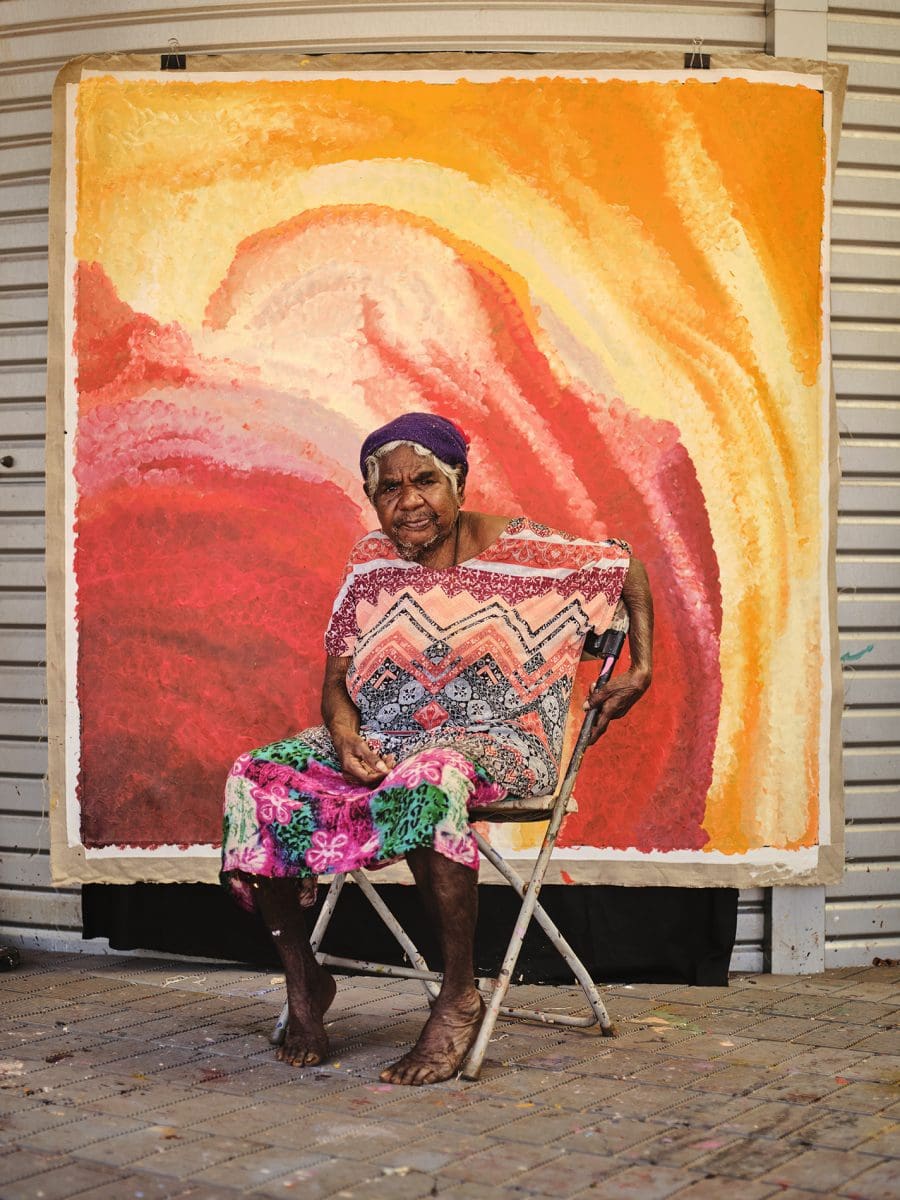
Bugai Whyoulter at Martumili Artists, 2021. Photography by Duncan Wright.
Mining and construction dominate the Pilbara region in northern Western Australia. It’s known as the state’s “mining powerhouse”—but on the other side of this economically-driven narrative is a more poignant significance: it is vibrant territory for Aboriginal art.
The intent of Tracks We Share: Contemporary Art of the Pilbara is to tell this story. Featuring 70 artists across four gallery spaces within the Art Gallery of Western Australia, lead curator Andrew Nicholls says the ambition is to “portray the region as a whole from an Aboriginal perspective” and establish the Pilbara as a national destination for arts and culture. However, there is an important caveat: “I am non-Indigenous, so it is a very rare and incredibly exciting opportunity for me to be able to work with many Aboriginal artists to help them tell the stories they want to tell.”
The show brings together art centres and groups based in the Pilbara including Cheeditha Art Group, Juluwarlu Art Group, Martumili Artists, Spinifex Hill Studio and Yinjaa-Barni Art. But at the reigns is a group called FORM, a not-for-profit based in Perth that trades in professional arts services across the state.
The exhibition began in 2018, when, as Nicholls explains, “We held a symposium and were invited to create a forum in Newman [a town in the Pilbara] to look at arts and culture in the region, celebrating it with the same importance as the resource industry.” This symposium motivated several art centres to collaborate with FORM, seeking to create a strong platform for Pilbara artists to show the vitality of their works, where artists guide the process foremost.
The outcome is a mammoth undertaking with 200 artworks distributed across AGWA and partnering venues. While many of the works are acrylic paintings for which the region is known, the show also incorporates photography, sculpture, installation and video—the diversity of media unpacks more traditional notions about art made in the Western Desert. For Nicholls it’s about having this recognition on national and international levels: one may compare this pursuit to a chant, where a multitude of voices join to create a singular chorus attuned to harmony in one location.
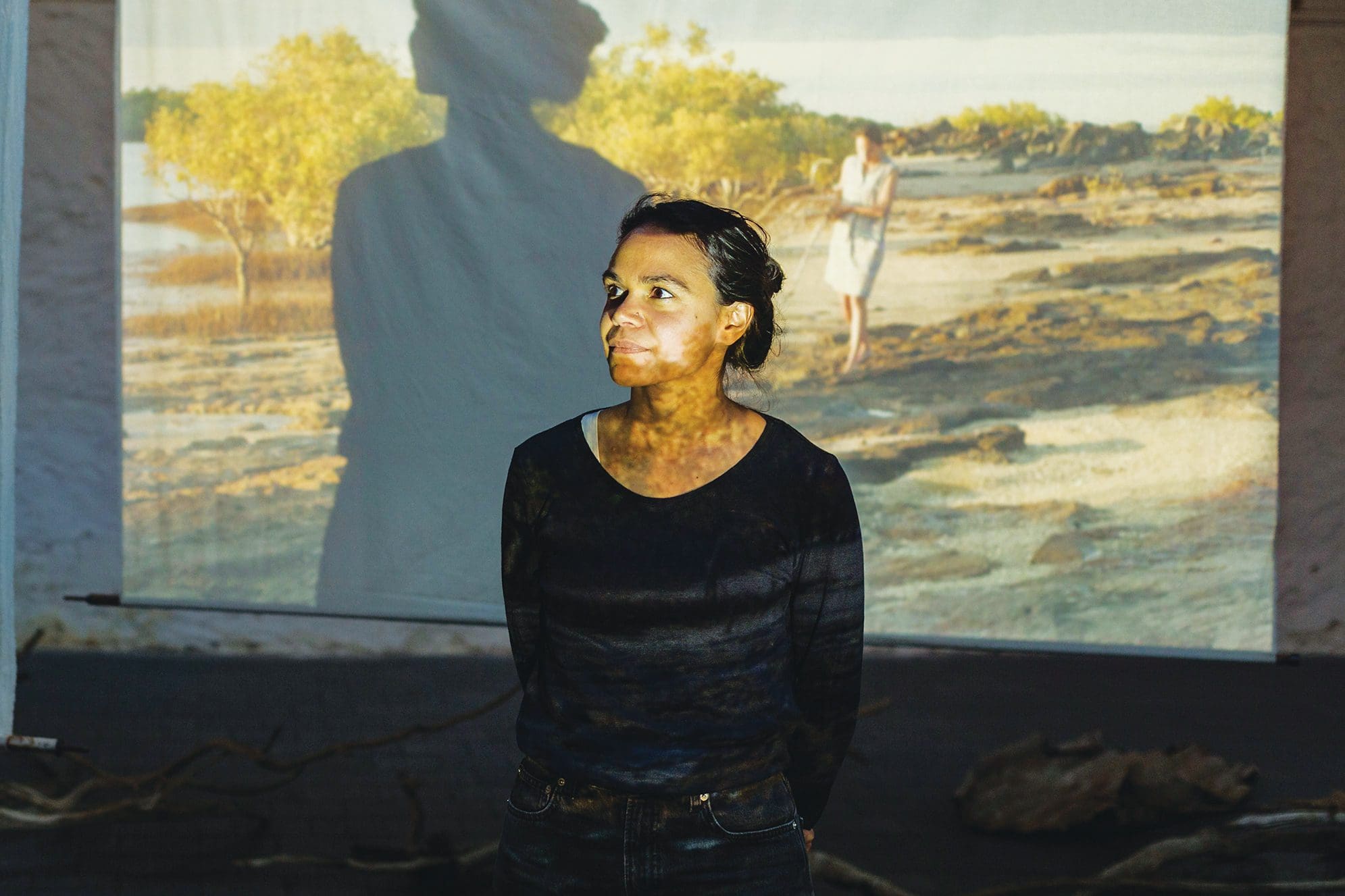
And what’s truly captivating is the work itself. Katie West’s I love you my baby, you are my firstborn, 2020-21, is an installation showcasing found driftwood alongside a two-channel video projection of natural landscapes. West, a Yindjibarndi woman based in Noongar Ballardong, is best known for her work with naturally dyed fabrics and a social practice that speaks to the “weaving” of histories. Here, her two video projections float above branches, which invoke a sense of shelter, belonging or homeliness. The work is the outcome of two residencies the artist undertook in Bajinhurrba (Cossack) to explore her heritage and reconnect with a familial history disrupted by the Stolen Generations. Walking on Country during the residencies, West collected branches to meditate on acts of transformation and reconnection. In the context of her practice, the title suggests that she is making history with her child on Country in a continuation of her cultural legacy.
Another video, Ngundamurri, 2021, by Juluwarlu Art Group, documents a men’s Ngunda (corroboree) performed by Juluwarlu artists at the Yindjibarndi community of Ngurrawaana. The men are captured in ceremonial attire performing a ritualistic dance on Country with breath taking landscapes.
It incorporates striking Nhurnda gundu (corroboree masks) and astonishing jarnyjin (dancing sticks) created by the Juluwarlu Art Group under the guidance of Guruma/Yindjibarndi birlagurda (craftsman) Wayne Stevens. The film documents the first time that these traditional dances have been performed on this part of Yindjibarndi Country in living memory, making it a highly significant event. The masks alone create an otherworldly scenery by elevating the face of the wearer to fantastical status, making them a truly magical sight.
Nicholls also highlights that there is “a lot of humour and ironic takes on contemporary life in the region, which hopefully will be a surprise for people who haven’t seen this work.” One of these takes is Layne Dhu-Dickie’s series of comic books Captain Hedland, named after South Hedland in Western Australia, where the artist is based. This younger artist uses a texta style to draw narratives where Captain Hedland is combating social problems in the region, such as substance addiction.
The comics have titles like Captain Hedland vs The Fisherman and Captain Hedland vs The Bush Mechanic. While there is a great sense of levity and celebration across the exhibition, many works deal with heavier themes. Curtis Taylor’s sculpture Justice, 2021, features a spear traversing a dismembered leg made from welded steel, mulga wood, belga resin and rust. The commanding work signposts the structures of justice that exist outside Western law by featuring a wooden spear. It is also strangely reminiscent of stolen cultural objects hidden in museum collections that are yet to be returned.
Tracks We Share: Contemporary Art of the Pilbara
Art Gallery of Western Australia
11 March—28 August
This article was originally published in the May/June 2022 print edition of Art Guide Australia.